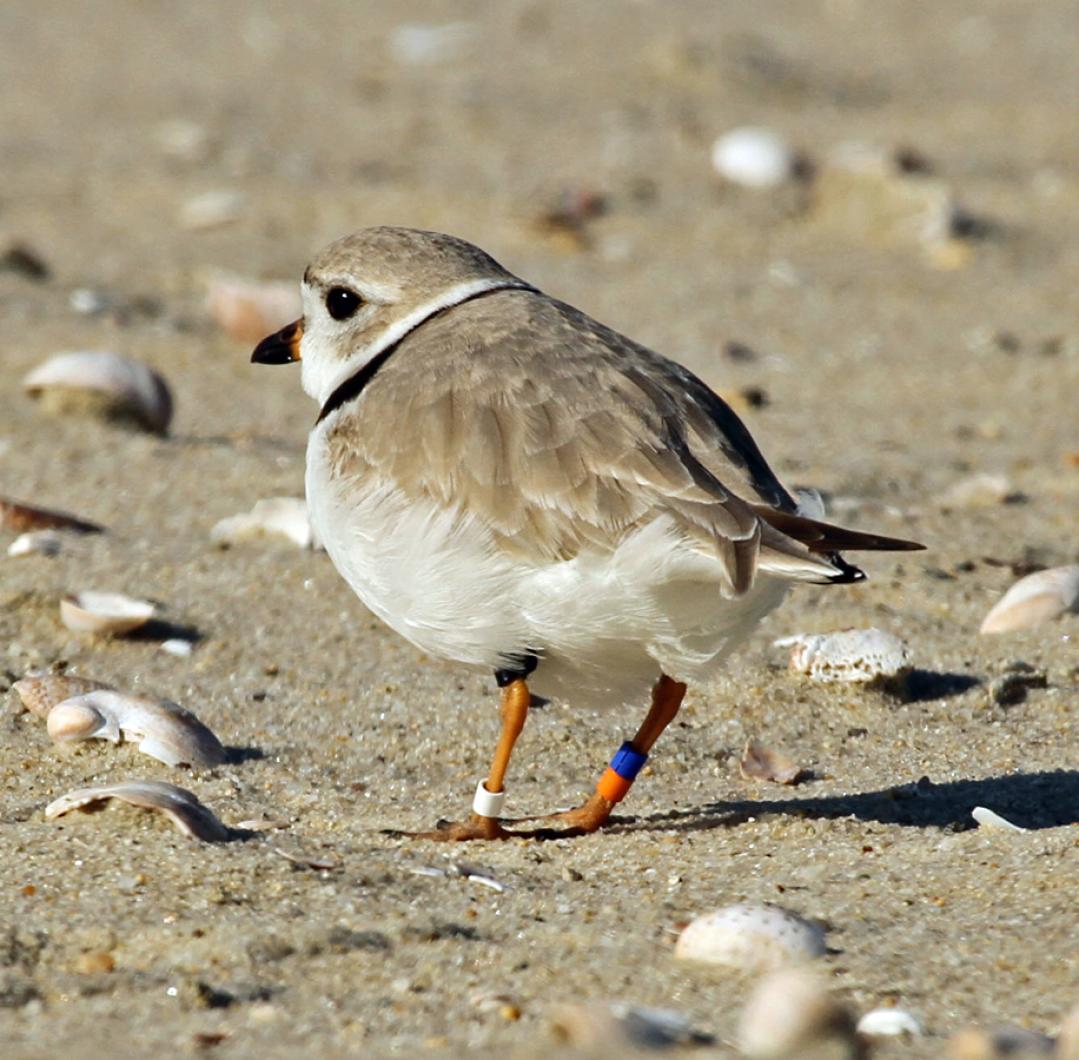In January, while Vineyarders endured battering sleet storms and mid-winter cabin fever, at least one of the Island’s piping plovers was enjoying a respite from the New England doldrums in the Caribbean. After a two-decade hiatus in researching plover migration, scientists from the Canadian Wildlife Service again started a tagging effort this winter in the Bahamas that has just begun to offer insight into the migration and behavior of this tenacious and much ballyhooed little creature, one of whom will call Aquinnah home this summer.
When piping plovers faced extinction from overdevelopment and human encroachment in the 1980s, all efforts to tag the animals were suspended when it was discovered that the metal bands researchers were using to track them were causing leg injuries, a troubling prospect for a species already on the brink. The latest Canadian effort to tag the animals and discover more about their breeding territory has foregone the metal bands for more innocuous color bands, although the U.S. Fish and Wildlife Service is still skittish about the technique.
Of the 57 piping plovers color-banded in the Bahamas throughout January and February, 36 have been spotted so far in breeding territories ranging from Nova Scotia to North Carolina.
“We’re already learning that birds that winter in very concentrated areas in the Bahamas are spreading out quite a bit in their breeding grounds,” said Becky Harris, director of Mass Audubon’s coastal waterbird program.
To date 13 of the birds have been spotted on Massachusetts beaches, which comes as no surprise since the commonwealth is home to a third of the Atlantic population. One banded bird in particular has settled down in Aquinnah, where he was first discovered on April 10 by Mass Audubon field assistants Jennifer Sepanara and Emily Heiser. His trials and travails have already illustrated well the fraught existence of the plover.
If wintering in the Bahamas and summering on the Vineyard all sounds rather exclusive, consider the first day of a plover’s life, when hungry and bleary-eyed, it must step clumsily out of its sand nest and search for its first meal on its own, braving a merciless gauntlet of gulls, crows and skunks, and even the oblivious footsteps of beachgoers and off-road vehicle tires. Unfortunately for Aquinnah’s own color-banded plover and his mate, the first brood of the season of four chicks, discovered on May 4, likely met one of these fates. Forensic evidence surrounding the nest area leaves little doubt as to the identity of the culprit. “There were skunk tracks all around,” said Ms. Harris. “We think that as soon as those eggs hatched the skunks probably ate them right away as soon as they left the exclosure,” she added, referring to the protective wire-mesh perimeter Audubon staff assemble around vulnerable nests.
The plover is not easily daunted, however, and can re-nest up to four times in a summer. The banded Aquinnah bird has been seen faithfully attending to its mate, indicating that another brood may well be on the way.
Islanders may remember the sometimes bitter battles in the 1980s when the plover was declared a threatened species and state environmental officials began to strictly enforce rules for protecting them. But the beach closures to four-wheel-drive vehicles that caused such a stir, especially among fishermen, today have become accepted routine during early summer. The closures for this year have already begun. David Babson, the Chappaquiddick superintendent for the Trustees of Reservations, said yesterday that parts of Leland Beach are closed between the Dike Bridge and Wasque, and that there are three pairs of nesting plovers on the Edgartown side of Norton Point, three pairs on Leland Beach and three pairs at the Cape Pogue elbow.
Although the piping plover has made large strides in its recovery (in 1986 there were fewer than 550 plovers on the entire Atlantic seaboard; today there are about 575 in Massachusetts alone) it still faces the constant threat of encroachment and overdevelopment. Much of the available breeding habitat in Massachusetts is already in use, and sustaining a stable population will require extensive vigilance and management Ms. Harris said.
“You have to have 1.5 chick fledge per pair to consider taking them off the endangered species list and that almost never happens. It takes a lot of intensive effort just to get one chick per pair, and make sure they don’t get stepped on or predated. I don’t think we’re going to reach a point where they’ll be fine on their own.”
Apart from the plover’s traditional enemies, the bird now faces a new more topical threat: oil slicks. As the banded plovers return to warmer climes this winter, researchers will get a better understanding of their migration patterns and how a disaster like the oil spill in the Gulf of Mexico — a popular wintering spot for plovers — will affect the still precarious population. However, if the Island’s own color-banded plover from Aquinnah stays true to his Bahamian roots, he should avoid the worst.








Comments
Comment policy »